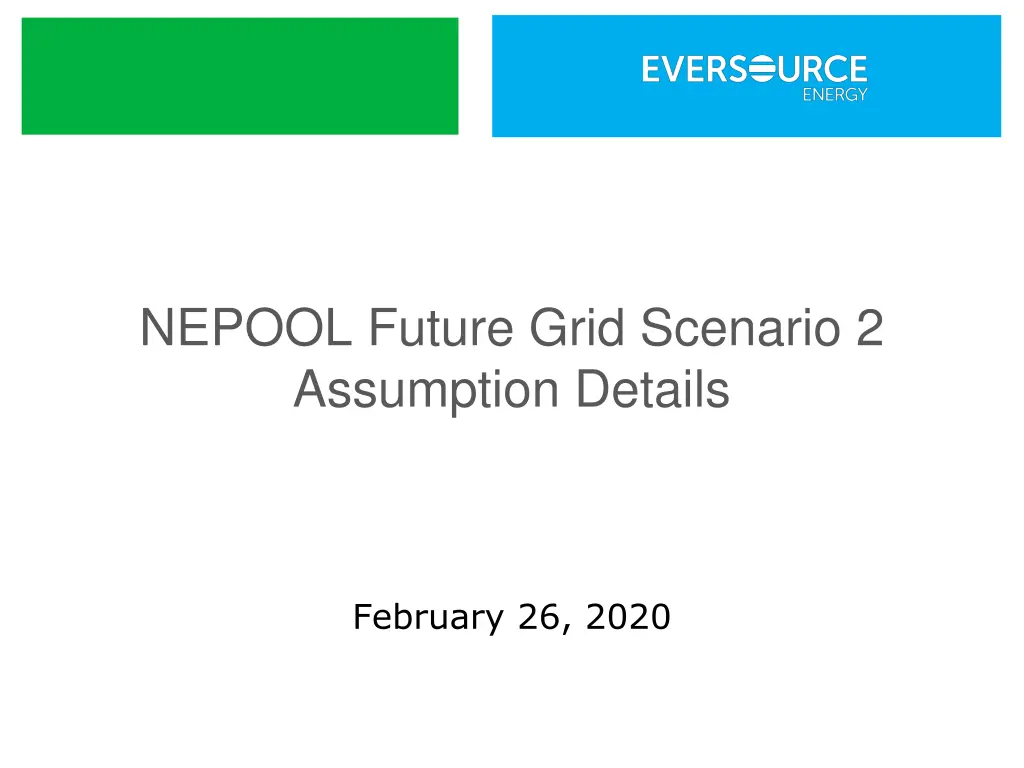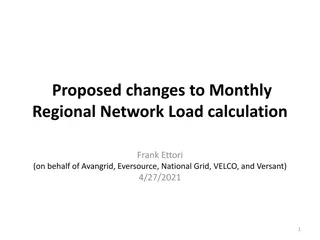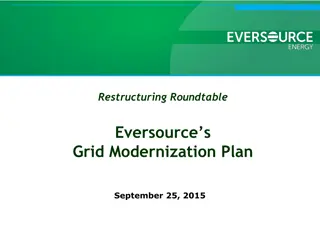
NEPOOL Future Grid Scenario 2 Assumption Details
Explore details of NEPOOL's Future Grid Scenario 2 assumptions, including in-market versus out-of-market storage, EV modeling, capacity additions, load growth assumptions, demand reduction strategies, and storage operations. Dive into the proposed methodologies and considerations for shaping the future grid landscape effectively.
Download Presentation

Please find below an Image/Link to download the presentation.
The content on the website is provided AS IS for your information and personal use only. It may not be sold, licensed, or shared on other websites without obtaining consent from the author. If you encounter any issues during the download, it is possible that the publisher has removed the file from their server.
You are allowed to download the files provided on this website for personal or commercial use, subject to the condition that they are used lawfully. All files are the property of their respective owners.
The content on the website is provided AS IS for your information and personal use only. It may not be sold, licensed, or shared on other websites without obtaining consent from the author.
E N D
Presentation Transcript
NEPOOL Future Grid Scenario 2 Assumption Details February 26, 2020
Task 2: In-market versus out-of-market storage Scenario 2 proposes ~4GW of new battery storage Stakeholders have asked about whether storage will be modeled as in-market or as a demand reducing resource Eversource proposes modeling all storage as in- market resources that respond to LMP 1
Task 4: Modeling EVs # EVs calculated by following process: 1. Start with number of total vehicle miles traveled to calculate vehicle emissions 2. Required vehicle mile reduction calculated based on 66% emission reduction relative to 1990 3. Using EV efficiencies, implied emissions rate of electric sector, miles per vehicle, etc. calculate implied number of EVs EV profiles based on ISO-NE Final Draft 2020 Transportation Electrification Forecast Zone BHE ME SME NH VT BOS CMA WMA SEMA RI CT SWCT NOR Total Light Duty EVs Annual GWh 59,440 201,027 144,698 362,633 202,558 774,859 218,113 281,259 366,915 216,924 414,980 287,329 172,630 3,703,365 296 1,002 721 1,808 1,010 3,864 1,088 1,402 1,830 1,082 2,069 1,433 861 18,466 2
Task 10: Capacity Addition Assumptions Eversource shared detailed data with ISO modeling team Updates based on ISO feedback: Scenario 2 has Millstone 2 retired. ISO noted that is unique among scenarios and that Scenario C tests specifically for nuclear retirements. Scenario 2 will keep Millstone 2 in service. OSW additions were focused in SEMA. Scenario 2 will instead spread OSW across SEMA, RI, and CT closer to the 2019 economic study. 3
Task 13: Load Growth Assumptions Proposed method: Start with 2021 CELT Calculate a 3-year CAGR (2028-2030) for each zone Apply to each future year to extrapolate to 2040 Does not apply to heating and transportation load, which are driven by decarbonization assumptions Same as Scenario 1 4
Task 14: Demand Reduction EE and BTM PV based on 2021 CELT using same methodology as load growth Same as Scenario 1 5
Task 15: Storage operation 3,940 MW new battery storage Mix of 2-hr, 4-hr, and 8-hr technologies 90% efficiency Storage distributed to zones based on system needs (e.g. zones with more intermittent resources require more solar for balancing) Additional storage beyond 3,940 MW added as necessary during model development 6
Task 16: Transmission topology Same as Scenario 1 7
Task 19: Resource Adequacy Proxy Units Agreed with National Grid, NESCOE, and Anbaric on using battery storage as proxy unit 8




